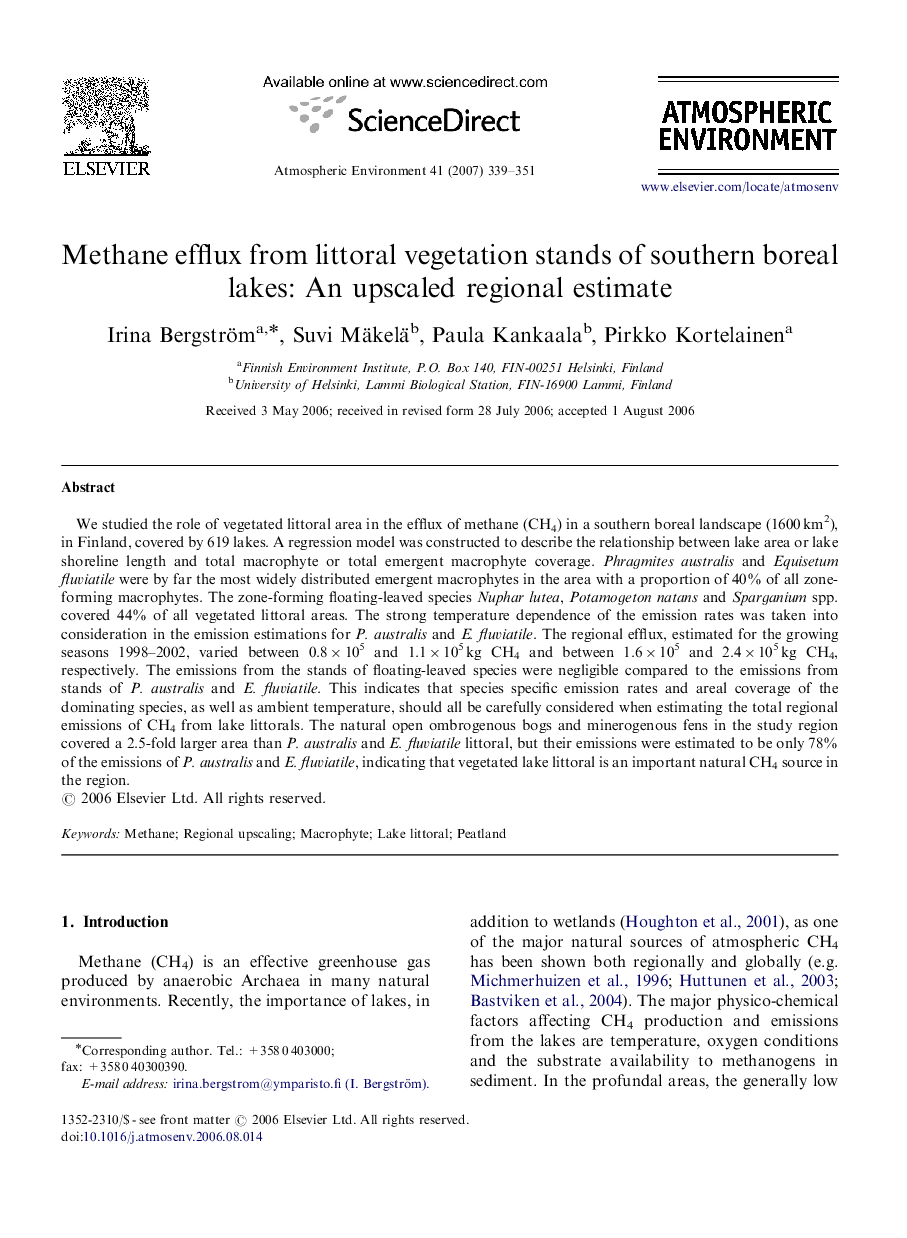| Article ID | Journal | Published Year | Pages | File Type |
|---|---|---|---|---|
| 4443954 | Atmospheric Environment | 2007 | 13 Pages |
We studied the role of vegetated littoral area in the efflux of methane (CH4) in a southern boreal landscape (1600 km2), in Finland, covered by 619 lakes. A regression model was constructed to describe the relationship between lake area or lake shoreline length and total macrophyte or total emergent macrophyte coverage. Phragmites australis and Equisetum fluviatile were by far the most widely distributed emergent macrophytes in the area with a proportion of 40% of all zone-forming macrophytes. The zone-forming floating-leaved species Nuphar lutea, Potamogeton natans and Sparganium spp. covered 44% of all vegetated littoral areas. The strong temperature dependence of the emission rates was taken into consideration in the emission estimations for P. australis and E. fluviatile. The regional efflux, estimated for the growing seasons 1998–2002, varied between 0.8×105 and 1.1×105 kg CH4 and between 1.6×105 and 2.4×105 kg CH4, respectively. The emissions from the stands of floating-leaved species were negligible compared to the emissions from stands of P. australis and E. fluviatile. This indicates that species specific emission rates and areal coverage of the dominating species, as well as ambient temperature, should all be carefully considered when estimating the total regional emissions of CH4 from lake littorals. The natural open ombrogenous bogs and minerogenous fens in the study region covered a 2.5-fold larger area than P. australis and E. fluviatile littoral, but their emissions were estimated to be only 78% of the emissions of P. australis and E. fluviatile, indicating that vegetated lake littoral is an important natural CH4 source in the region.
